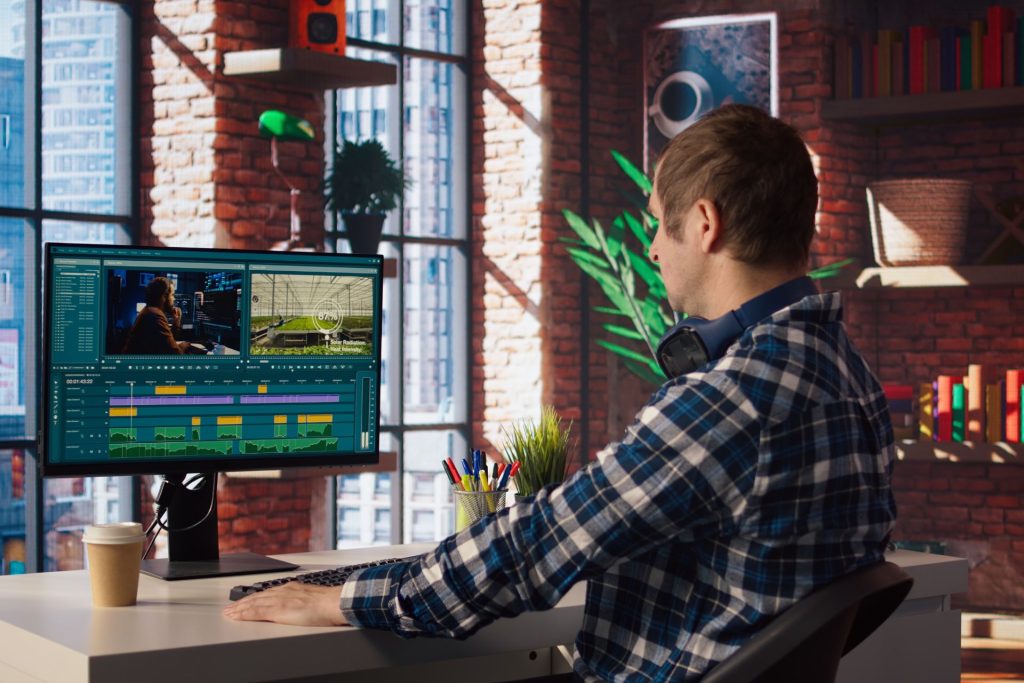1. Master the Basics of Video Editing
Before diving into video editing, it's crucial to understand the fundamentals of editing and montage. The main goal of editing is to tell a compelling story and keep the viewer engaged.
Key Aspects of Effective Editing:
- Story Flow: Ensure your video has a clear and engaging narrative. Remove unnecessary clips to maintain a smooth storyline.
- Rhythm and Tempo: Adjust the pace of your video based on its style. Fast cuts work well for action-packed content, while slower edits enhance emotional scenes.
- Seamless Transitions: Avoid harsh and abrupt transitions. Use cross-cutting, dissolve, or jump cuts to maintain a natural flow.
2. Use Color Correction & Grading
Colors significantly impact the viewer’s perception of a video. Color correction and grading can enhance visuals and give your video a cinematic look.
Two Key Color Techniques:
- Color Correction: Adjust white balance, saturation, and brightness to achieve consistent colors across all shots.
- Color Grading: Apply color effects to create a specific mood. For example, cool tones evoke suspense, while warm tones create a friendly atmosphere.
3. Pay Attention to Sound Editing
Great videos require more than just stunning visuals—high-quality sound design enhances engagement and improves the viewer’s experience.
Essential Sound Editing Tips:
- Remove Background Noise: Use software like Adobe Audition, Audacity, or Pro Tools to clean up unwanted noise.
- Enhance Dialogue Clarity: Adjust EQ (equalization) and compression to make voices clear and balanced.
- Use Sound Effects & Music: Add background music and sound effects to enhance the mood and make the video more dynamic.
4. Use Smooth Transition Effects
Transitions help maintain fluidity between scenes without distracting the audience.
Popular Transition Effects:
- Jump Cut: Used in fast-paced videos, ideal for YouTube content.
- Cross Dissolve: Creates a smooth transition, perfect for storytelling videos.
- Wipe & Fade Transitions: Commonly used in films and documentaries.
5. Incorporate Visual Effects (VFX) & Animations
Adding visual effects (VFX) and animations can enhance your video’s appeal and professionalism.
Where to Use Visual Effects & Animation:
- Green Screen (Chroma Key): Replace backgrounds or add special effects.
- Text & Motion Graphics: Use animated text, captions, and infographics for clarity.
- Special Effects: Enhance your video with digital elements using After Effects, Blender, or Cinema 4D.
6. Keep Your Video Concise & Engaging
Viewers, especially on social media, prefer short and engaging videos. Ensure your message is clear, direct, and impactful.
How to Keep Videos Engaging:
- Remove unnecessary scenes.
- Optimize scene durations.
- Place the most important content at the beginning.
7. Optimize Videos for Different Platforms
Each platform has specific video format requirements, and optimizing accordingly can improve engagement.
Best Video Formats for Different Platforms:
- YouTube: Use a 16:9 aspect ratio, 1080p or 4K resolution, MP4 format.
- Instagram & TikTok: Best suited for 9:16 vertical or 1:1 square formats.
- Facebook & LinkedIn: Use 16:9 or 4:5 formats for the best display.







Son yorumlar